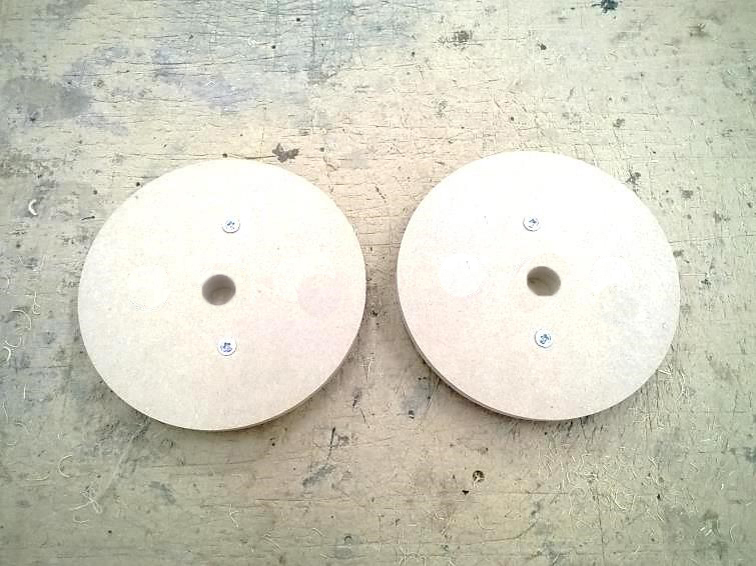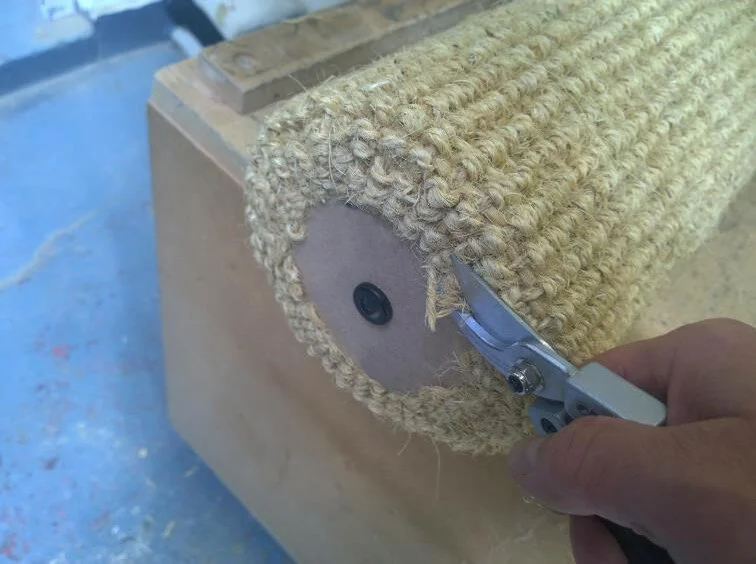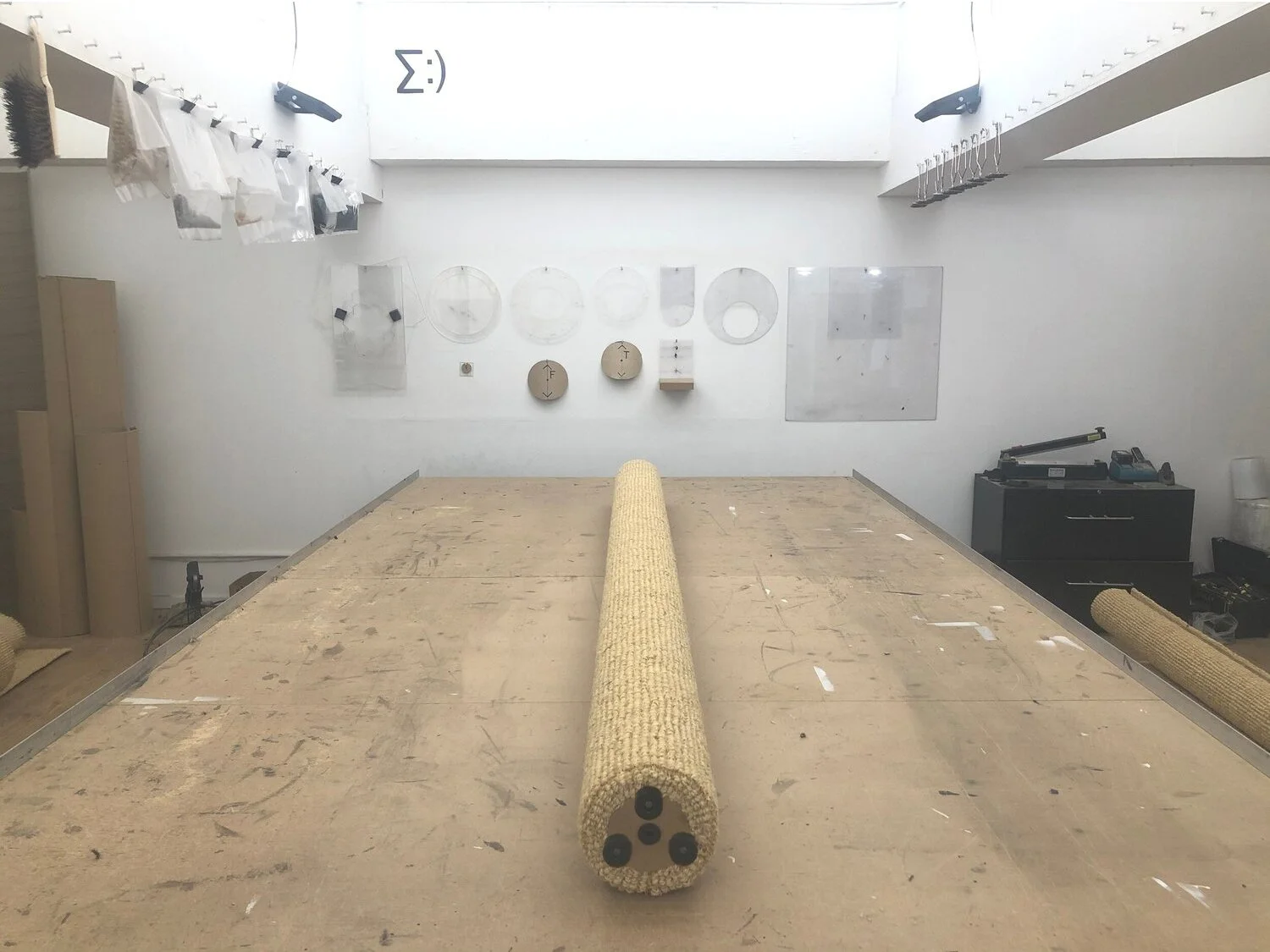DIY Polecat
We are frequently asked if we have any tips for making a do-it-yourself version of our Hicat® units so we've put together the following notes for making a DIY Polecat
The following notes & images are from our now out of date Fabrication Guide, which was developed for our partner manufacturing production so we've adapted these as instructions for this DIY project in terms of tools & techniques with the addition of some new photos where applicable.
A DIY Kit of standard parts, fixings & tools can be purchased using the link at the bottom of the page to help complete this DIY project.
The price of the DIY Kit is £20 - delivery is calculated at checkout & please get in touch if your country isn’t listed & we can provide a Delivery Quote.
The DIY Kit includes the following parts for the fabrication & install - we've also listed the materials, tools & other bits that you will need to complete your DIY Polecat:
Fabrication
3 Feet
3 Pan Head Screws
2 Bushes
4 Flat Head Screws
1 Flat Wood Bit
6 U-Nail Staples
6 MDF Off Cuts (2x 12mm & 4x 9mm)
Installation
1 Ceiling Connector
1 Bush (plus spare)
1 Drill Bit
1 Glue Sachet
3 Foam Pads
Construction Materials
Cardboard Tube - ceiling height minus 60mm (or 78mm for rebated end cap assembly)
Carpet - ceiling height plus 150mm & 3.3x outside tube diameter
Carpet Glue - 0.5-1L
Hot Melt Glue Sticks - 10 to 20 mini sticks
Tools
Hot Melt Glue Gun
Tenon or Carpentry Saw
Jigsaw or Coping Saw
Hammer
Philips Screwdriver (PZ2 size)
Secateurs
Surform Plane
Other
Tape Measure
Rubber Gloves
Pencil
Compass
We recommend having a good read through the following notes before ordering a DIY Kit as there are some materials & tools that may need to be purchased to complete your DIY Polecat so it's prudent to cost & gauge the project beforehand.
We also think it's worth saying that although we have simplified things as much as possible this DIY project may still be too much for an inexperienced DIY'er but that said, nothing ventured, nothing gained.
Overview
The DIY Pack is based on the materials we use in our manufacturing process so if you have to deviate from these you may need to make adjustments in terms of fixings, template measurements & quantities.
Polecats units are constructed from 4mm thick 152mm inside diameter spiral wound cardboard tubes - the tube sizing doesn’t have to be identical to this spec but if you are planning on using a Cat’s Cradle with your DIY Polecat the outside diameter of the tube once wrapped should be close to 180mm.
Essex Tubes supply our cardboard cores in standard 3m lengths & most of our carpet comes from Alternative Flooring, Kersaint Cobb or Crucial Trading but as you would expect non-trade purchases from these companies will be probably be uneconomical in terms of cost so searching your local carpet stores for unwanted tube cores & online for carpet remnants will definitely be worth investigating.
Our standard tube end cap assembly works on an end cap diameter of 108mm & insert disc of 152mm allowing 4mm for the tube wall thickness - if you use a tube with an internal diameter of less than 152mm the 3x 38mm feet & 30mm bush wont work. There are some work arounds noted in the steps but it’s best to have a plan in place before starting if using a tube diameter less than our standard diameter.
Although we show a cardboard tube in the DIY instructions we think the best DIY option is to use a PVC drain pipe instead of cardboard tube - we actually used a drain pipe for our first prototype back in 2004 & if you use a 6” diameter soil pipe this will have the same external 160mm diameter tube size as our Polecat cardboard tube so you will also have the option of using a Cat’s Cradle on the unit as long as a similar thickness coir to our standard finish is used to wrap the unit i.e. 10-12mm noting that the wall thickness will be 6.2mm as opposed to the 4mm cardboard tube wall thickness so this needs to be factored into when you make up the end cap assemblies.
Polecat has a wrap-around detail over a 22mm rebated end cap at each end of the unit as standard - this guide shows our original flush fitted end cap assembly, which s made up of a round 12mm thick MDF inset disc fixed inside the ends of the tube with a smaller 9mm thick MDF end cap back fixed to it.
The end cap assembly is fitted with a bush at both ends so you can turn your unit upside down when it becomes worn - the feet can simply be un-screwed & refitted.
Using our DIY Kit the tube needs to be 60mm shorter than your ceiling height when using this flush fitting end cap assembly so that when the unit is complete you will have a 36mm clearance for installation.
When using a PVC drainpipe we recommend beefing up the DIY end cap assembly so that you create a similar type of rebated end cap assembly that we use on our made-to-order Polecats - this version means that you will need to shorten the tube by another 18mm to allow for a 9mm thick MDF disc that sits between the 12mm thick end cap & 9mm thick inset disc to create a collar..
The tube is covered in latex backed coir carpet, which is bonded to the tube using a non-toxic non-flammable adhesive - we use a ready mixed water based flooring adhesive made by Soudal, which comes in 1L & 5L sizes so one or two 1L tubs should be fine for a standard ceiling height.
We've tested lots of different carpet & come to the conclusion (with lots of the help from our cats) that a wide ribbed looped boucle weave that has a 12-15mm span between ribs is best for climbing but you can obviously try out your own materials.
The covering needs to be glued to the post with the ribs running vertically to aid climbing - flooring adhesive is used to bond the covering to the tube but the seam to join the edges of the covering needs to be fixed with a hot melt heated glue gun.
If you don’t have a glue gun there are some reasonably priced mini glue guns available to purchase online but please make sure you purchase additional glue sticks with the gun - you will need between 10-20 of the mini 100mm long sticks for the main seam, end cap fixing & finishing the seam depending on your ceiling height - you can use a contact adhesive in place of the hot melt glue but it will be easier with a glue gun based on our experience & without the strong odours & toxic substances used in contact adhesive.
The carpet is folded around the end of the tube & fixed up to the end cap to give a clean wrapped detail but you can also just cut the carpet at the ends, which is much easier to complete, although you may find it will fray & be prone to much more wear & tear - if you intend to have a straight cut at the end of the tube, rather than a wrapped end detail, you don’t have to bother with the smaller MDF end cap as you can simply mount the bush & feet onto the inset disc that gets installed into the tube but remember to cut the tube longer to make up for the end cap thickness that has been removed.
So, if you've read the above & want to give this DIY project a go roll up your sleeves & the following step-by-step notes should see you through to making your own Polecat.
Step-By-Step Fabrication
Mark-up & cut the tube to length using a tenon or carpentry saw - the tube length needs to be 60mm shorter than your ceiling height & it helps if you have several marked-up points around the tube as a guide when cutting to ensure a straight cut.
Cut-out MDF end cap assemblies using a jigsaw or coping saw - use a compass to scribe the inset disc & end caps marking up centres for the bushes on each disc.
The diameter of the 9mm inset caps that will fit inside the tube should be as tight as possible to get a good fit & the diameter of the 12mm thick end cap should be at least 110mm to allow for feet & bush positioning.
NB as noted in the Overview if you are using a tube with a smaller internal diameter than our standard tube the 3 feet & bush layout on the bottom end cap assembly won’t work - to help with spacing it’s best not to install a bush on the bottom end cap assembly but you can still drill the hole to make it upside down future proof.
Drill the centre holes using the flat wood bit.
Back fix the inset disc - use 2 of the flat head screws for each assembly.
Install the bushes into the end caps with a dab of glue gel - it's best to use a rubber mallet but a hammer will also get the job done if you’re careful.
Scribe a horizontal line along the length of the cut tube - you can rest a pencil on top of MDF off-cut that's half the height of the tube then run it along the length of the tube.
Install the end cap assemblies into the ends of the tube making sure that the inset discs are flush with each end of the tube.
If the end cap assemblies are too tight you can trim back the diameter of the inset disc using a surform plane.
We use a staple gun to fix the end cap assemblies so have included u-nails in this kit - use 4 u-nails at each end & these need to be hammered in approximately 4mm in from the edge of the tube & it’s also worth running a thin bead of glue on the inside edge of the tube.
If you’re using a PVC drain pipe here’s a mock-up of the end cap assembly showing a 9mm thick grey insert disc, which fits inside the tube, a yellow 9mm disc the same size as the outside diameter of the drainpipe & black 108mm diameter 12mm end cap - the assembly is back fixed as before but glued rather than stapled into the pipe.
NB as noted in the Overview we use this rebated method as standard on our units & although it’s a bit more work we would adopt this end cap assembly whether you are using a cardboard or PVC tube as it’s a much stronger detail.
The carpet needs to be approx 150mm longer than the tube length & 3.3 times wider than the outside tube diameter – use the secateurs to make a clean cut down the long edge of the carpet between the ribs making sure that you leave as much as possible of the flat section between the ribs of the carpet if using a boucle or looped pile material.
Fix the cut edge of the carpet to the tube along the scribed line – use the hot melt glue gun & make sure you have equal overhanging carpet at each end of the tube.
After making sure that the carpet edge is fixed by pressing down along the seam a few times use the carpet adhesive to fix the carpet around the tube - we wear rubber gloves to apply the adhesive as it's easier to work on to the tube than an applicator.
Work the glue on to the tube in sections rotating the tube as you glue leaving a 40-50mm unglued section up to the seam - try to apply a line of ridges along this point to help with fixing the carpet.
Then work the fabric around the tube making sure that there is no give in the carpet & the wrap is as tight as possible - it will be easier working the coir around the tube if you place it on a carpeted floor then massage the coir whilst rotating the tube bit-by-bit as the carpet will will help to hold the wrapped sections tight.
We use clamps at this stage to hold the carpet seam together while working the carpet around the tube & then leave the unit overnight for the glue to cure - it’s unlikely that you will have clamps so you’ll need to continue pulling & wrapping the carpet as noted in the previous stage until the carpet has bonded enough to move onto the next step, which should take around 20 minutes or so.
Trim the edge of the carpet to the glued seam using the secateurs then fix this edge using the hot melt glue gun – it’s best if you can get a clean join without the edges overlapping or being too far apart.
When fixing the seam it's best to apply glue in sections of 10-15cm at a time so that the glue does not harden.
Cut the carpet at each end of the unit using the secateurs to form the wrapped end detail that will fold over the end caps.
Fold the carpet over the ends & use the inside edge of the end cap to guide the secateurs when making a cut.
The carpet will be easier to trim if you remove excess fabric before cutting the flaps but make sure you leave at least 4-5cm to form the flaps.
Cut the flaps between the ribs into sections creating a small v shape cut - we cut the flap into 4 sections but it will be easier if you go for 6-8 as you won’t need to apply as much pressure when forming the wrap.
Fix the flaps with the hot melt glue gun one at a time.
Work the flap on to the end cap making sure the ribs are radiating pointing to the centre of the end end & you have a good fix before moving on to the next one.
Clean up the edge of the wrapped ends with the secateurs.
Screw the feet around the end cap equi distance - it’s best to drill small pilot holes for the screws & the feet can overlap the coir slightly if you need to avoid the central bush.
Pull some coir strands from the carpet off cuts & cut these into 3-4mm long fibres in preparation for finishing the unit's seam.
Apply a thick bead of hot melt glue along the seam then dab these fibres onto the seam - again it's best to apply the glue in sections of 10-15cm at a time.
Stand back & admirer your handy work.
Installation
Please refer to our special DIY Polecat Install for installation instructions.
NB Please note that although we obviously carry stock of the standard tube, carpet & sheeting materials we are unable to sell these materials to customers (sorry) but we do sometimes have offcuts & tubes that are offered up free-of-charge for collection - please sign up to our newsletter below if you would like to hear about these offers.































